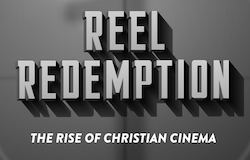The Best of Pictures: The Hurt Locker (2009), by Josh Long
27 Mar
 THE HURT LOCKER (2009)
THE HURT LOCKER (2009)
Directed by: Kathryn Bigelow
Written by: Mark Boal
Starring: Jeremy Renner, Anthony Mackie, Briah Geraghty
So for those who don’t know, I’ve been writing a series on the films that have gained American film’s highest honor: the Academy Award for Best Picture. Since the Oscars themselves have caught up with me, I think it’s time to step away from the retrospectives and take a look at 2009’s winner, The Hurt Locker.
The Hurt Locker is a war movie, but it isn’t a war movie. While it centers on soldiers on the front lines, it has none of the trappings and plot structure we associate with war movies. No “band of brothers” fighting together into the fray and dying one by one. The film is also able to walk a political tightrope, choosing not to make a statement about a hotly debated war. Maybe this is part of the appeal. There have been many movies dealing with the Iraq War since it began in 2003, but few, if any, have garnered critical praise. High profile and seemingly successful projects like Robert Redford’s Lions for Lambs and Brian de Palma’s Redacted were hounded by critics and ignored at the box office 1. Both of these had strong political themes, riding the growing wave of dissent about the war. Yet they, along with many others, didn’t make it.
One of the important differences is that The Hurt Locker chooses to deal with the specific experiences of three soldiers, relating their situation to us without bothering with the over-arching circumstances. It’s an intimate story, on a smaller scale. And it’s effective enough to be very exciting. The film puts us squarely inside their situations, and the pressure is crippling. The movie is strongest when it puts us alongside the bomb squad on the job. It doesn’t include the widespread chaos to which the War Movie has made us accustomed. Saving Private Ryan is intense in that it surrounds us with a noisy, swirling, indistinct danger; Hurt Locker places the danger inches away from us, and we can do nothing but quietly wait until it’s disarmed. If it’s disarmed.
The plot structure is atypical, focusing more on character development. There’s no clear goal that these three soldiers are trying to reach, we’re just watching how they have to associate with and react to each other on a daily basis. It’s fascinating to see the realism in how soldiers who have personal differences at base camp must fight to keep each other alive. They know their job, and when lives are on the line, they can put differences aside.
Jeremy Renner has been highly praised for his performance as Sgt. James, and with good reason. He portrays a very nuanced character, which could come off as a stereotypical “wild man.” He is, in fact, wild and reckless, but Renner doesn’t allow this to define the character. He lives out the idea that “war is a drug,” always looking for a high. It’s not that he doesn’t realize the seriousness of his situations; he feeds off of it. But it affects his ability to function with others. As he seeks bigger thrills, his risks hurt his fellow soldiers, and especially in the epilogue we see how suburban life will never be good enough for him. It’s a fascinating character, and the realism is strengthened by the way we’re never allowed to come too close. He keeps even the audience at arm’s length – we understand him no more than we would an acquaintance.
Director Kathryn Bigelow and screenwriter Mark Boal have crafted some wonderfully exciting scenes in this film 2. At the start the viewer may wonder how a string of bomb-disarming scenes can continue to be interesting, but, there is enough variation in the types of bombs and the level of danger, each new scene keeps us on the edge of our seats. These are the most memorable scenes of the movie, and probably the ones that will endure in our collective memory.
The ending of the film is somewhat muddled. After the climax, we’re taken back to the US, where we see Sgt. James with his wife and child. It takes a while before we know whether we’re in a flash back or a flash forward. Ultimately it leads to James’ decision to return to Iraq, to get more of his drug. Thematically, it follows, but structurally it’s a little messy. The sudden drop in intensity and jarring switch to suburban life is effective at first, but when these scenes amble for a few minutes, we wonder why we’re watching this. It’s necessary for the payoff, but it could be handled more effectively.
Many critics were predicting that Hurt Locker would take home the big prize, while many others favored Avatar 3. I’m glad that Hurt Locker won over Avatar, but I think it’s a shame that these two films went in as the frontrunners, leaving little chance for great films like An Education, Up in the Air, and my favorite of the year, Inglorious Basterds 4. Still, it’s a quality movie, with passable faults, and deeply engaging. Congratulations, say I.
1. Lions for Lambs only returned $15 mil. off its $35 mil. budget, while Redacted took a huge hit – $65K gross off a $5 mil. budget.
2. Both also took home Academy Awards for their efforts.
3. Among them Entertainment Weekly – I’d love to get a look at those people’s “Relevancy vs. Money-Making” flowchart.
4. Tarantino really took me by surprise with Basterds. It shows a maturity as a filmmaker and especially as a writer that proves he’ll stay on top for a while. Also, I love German movies, and the references to movies like “The White Hell of Piz Palu” make me feel like I’m cool.



No comments yet